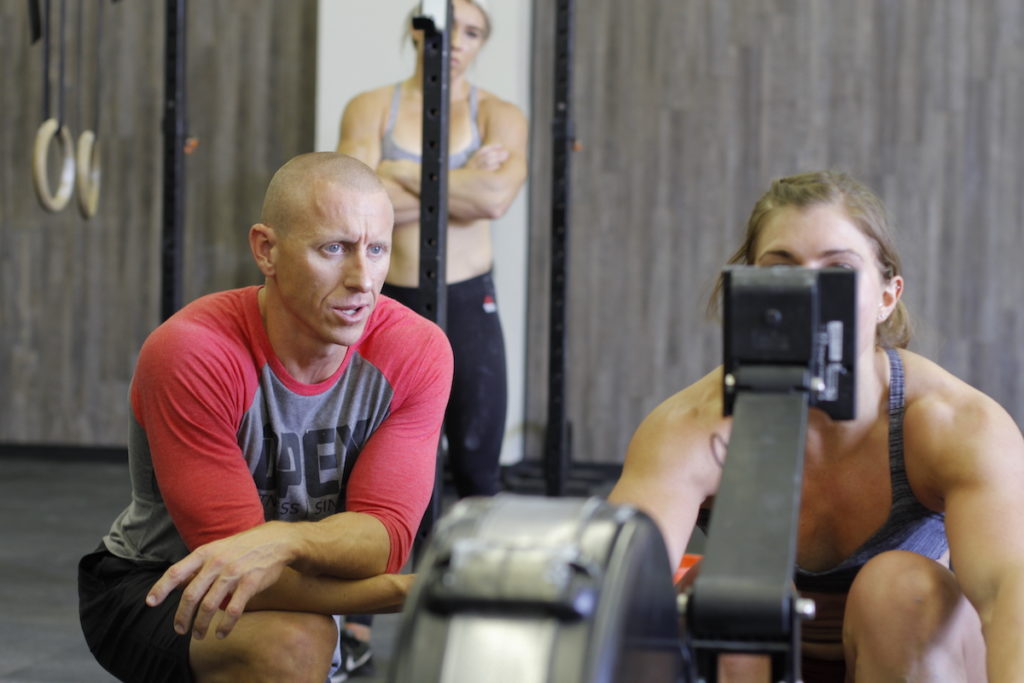As I sat there unable to straighten my arms without some serious effort and pain four days after doing Murph on Memorial Day in May, I came across this social media post by James FitzGerald, the Founder of OPEX Fitness and the winner of the first ever CrossFit Games.
“Coach tip: What makes one really good at repeatable intense pieces is not more intense pieces; it is improving the recovery between those intense attempts. Anyone can suffer and do intense things one at a time. Repeating it is higher order.”
In that moment, I could especially relate: No chance was I going to be able to do a workout with Murph-style volume or intensity for at least a couple more days.
So I reached out to FitzGerald and Carl Hardwick, Certified Strength and Conditioning Specialist (CSCS) and OPEX COO about programming for recovery.
If you’re a CrossFit athlete, how do you effectively improve, not just your ability to get through not just an intense workout, but get through multiple intense efforts?
5 Tips from the Experts
1. Consider Your Behaviors and Intentions
“Start with your behaviors and intentions. If you are doing the sport to look good on IG, then whatever you do for your training won’t matter that much. Perform and train in the sport because it is really cool to discover what you are capable of physically expressing,” FitzGerald said.
As a coach of 11 years, I couldn’t agree more. Oftentimes, a person’s actions and behaviors in their life aren’t aligned with their stated intention or goal, therefore, their day-to-day behaviors, from sleeping habits to eating habits etc, don’t serve them very well.
Truth be told, I knew Murph would mess my body up, because I’m no longer a competitive athlete training at a high level, nor did my behaviors in the days leading up to Murph lend themselves to speedy recovery post Murph. I knew I was fit enough to get through the workout, and not injure myself, in a decent amount of time when I was fresh, but to expect anything less than a crippled body for five days after would have been ludicrous.
So the key comes down to alignment: Be honest with yourself about what you truly want, and then your decisions around this intention will fall into place.
As Fitzgerald explained: “Correct intentions will always align proper training, so that one can improve their recovery between sessions and not chase dramatic sensationalism and burnout.
2. Get Your BLGs in Order
If your goal truly is to do all you can to perform and recover as best as possible, then it’s important to take your basic lifestyle guidelines (BLGs) “to its peak. Now,” said FitzGerald.
In other words, the answer isn’t in a post-workout shake or recovery pill.
“Recovery between intense pieces is heightened by your natural ability to get back to homeostasis as fast as relatively possible. Sleep, food and relaxation hygiene will increase the opportunity for maximal aerobic expression, therefore, creating faster relative recovery times for the athlete, he said.
It also helps to track everything and put in place “some form of weekly assessment,” FitzGerald explained, that considers things, such as:
- Are you getting better or staying the same?
- Are you doing more volume as prescribed?
- Are you hitting personal bests?
- Are you lowering your rest periods slightly and adding density to your workouts?
“These are ways to (figure out) if you are guessing, or progressing,” he said. And from there you can adjust as needed based on your observations.
3. Never Stop Trying to Improve Your Aerobic System
Essentially, continually building your aerobic system is one of the biggest keys to better recovery. And it can always get better.
“Keep trying to improve your aerobic system, while maintaining continuous personal refinements in strength,” FitzGerald said.
He added: “Becoming as aerobic as possible for you will allow one to maximize the frequency in which they can perform intense pieces, should they wish to or need to do.”
4. Consider Your Central Nervous System
Hardwick explained the importance of the nervous system in recovery when it comes to recovery. Specifically, he recommends splitting your training days up in terms of the demands they place on your central nervous system (CNS).
“The idea is to use high and low CNS demanding exercise sessions to maximize recovery between these sessions. Usually the high days that come after a rest of recovery day will be the priority days in the training program,” Hardwick said.
In practice, this might mean Monday is a high CNS-demanding day, while Tuesday places lower demands on your nervous system. Wednesday is high again and Thursday is a rest day. And so on and so forth.
5. Respect Where You’re at
In short, intensity is relative. What is intense for one athlete might be a stroll in the park for another, so relative intensity must be factored into your training to both burnout or not doing enough intensity.
“The best way to gauge intensity is to measure how well you are recovering from the training session,” Hardwick said.
Some clues that show you might not be recovering well, according to Hardwick, include:
- disturbed sleep (trouble falling asleep, frequently peeing in the middle of the night)
- low energy 15 minutes after waking up
- decreased sex drive
- drastic decrease or increase in appetite
- low motivation in the gym
- decreased performance in the gym
Bottom line: Pay attention to your body and how it’s recovering, and adjust your program and lifestyle accordingly.
